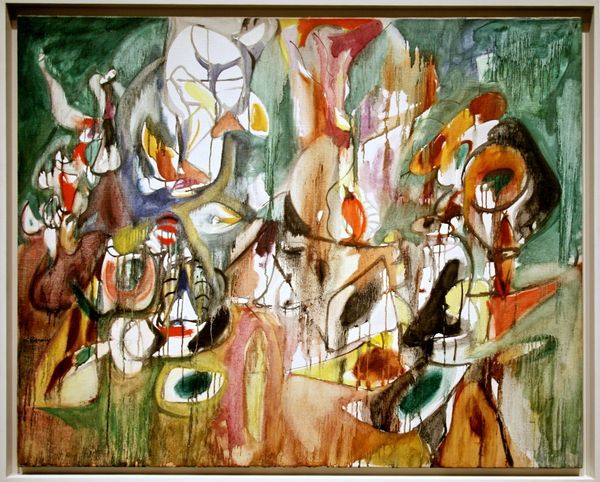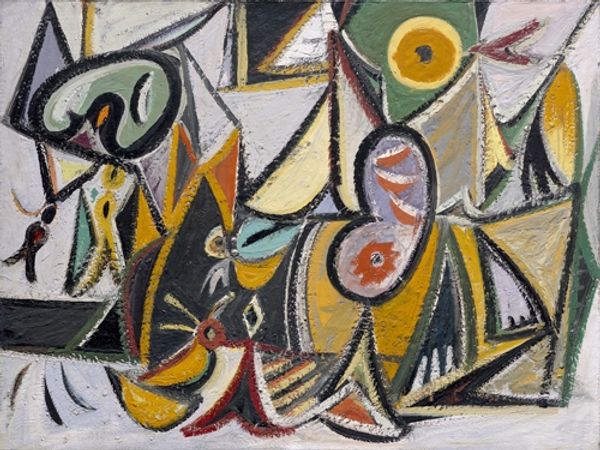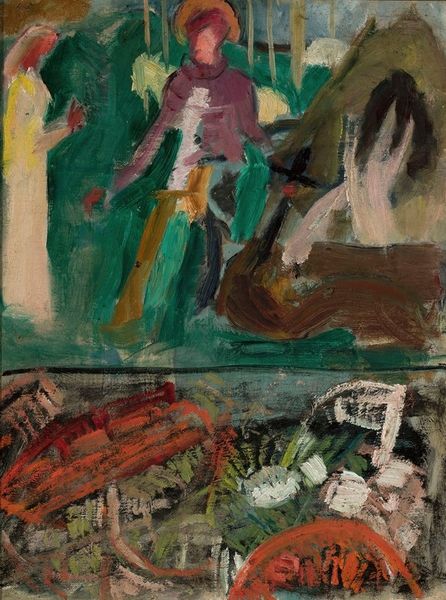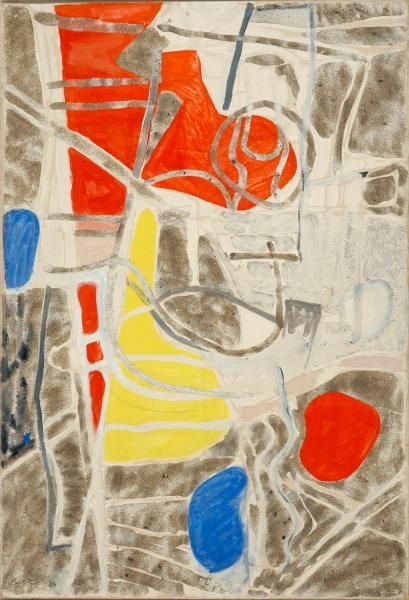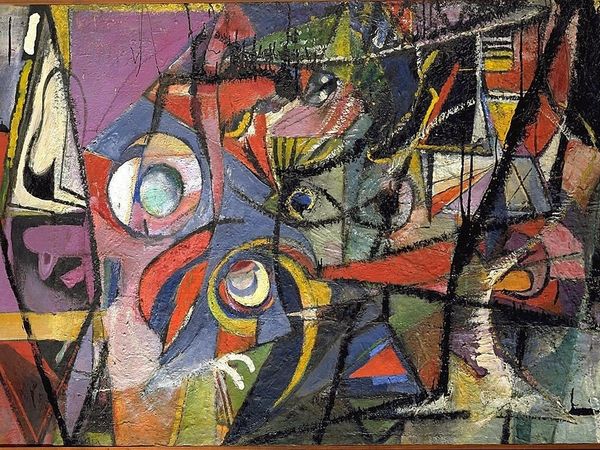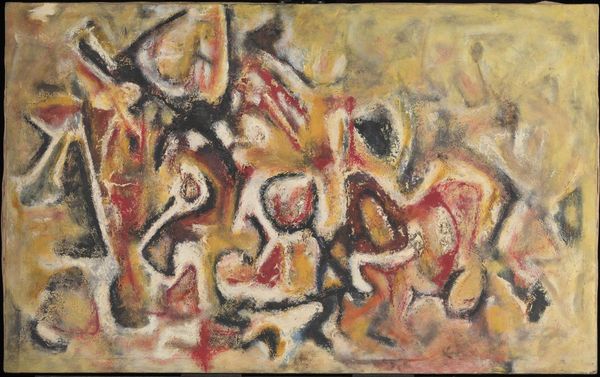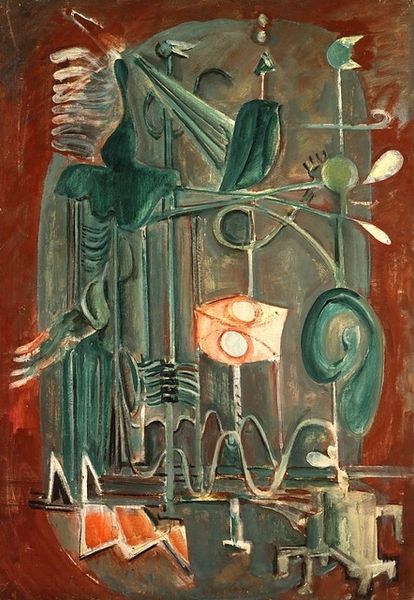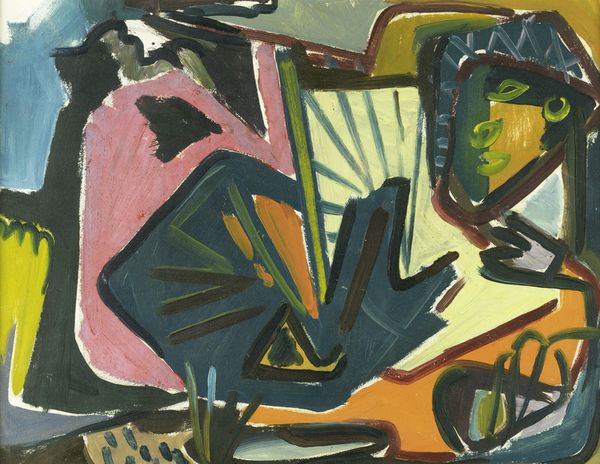
watercolor
#
abstract-expressionism
#
organic
#
figuration
#
watercolor
#
abstraction
Copyright: Public domain
Curator: This watercolor work before us, completed in 1944, is entitled "The Leaf of the Artichoke is an Owl", and was created by Arshile Gorky. What's grabbing your attention first here? Editor: It feels so chaotic, but in a strangely calming way. The earthy colors and swirling shapes almost give me the sense of looking into the eye of a storm but from a safe distance. Curator: Gorky's work in this period is deeply personal, a culmination of childhood memories, cultural trauma from his Armenian heritage, and an exploration of his own artistic identity in the burgeoning Abstract Expressionist movement. Consider how his experiences of displacement and loss might translate into these ambiguous organic forms. Editor: Absolutely. Seeing it through that lens, it does feel like a struggle for grounding. The "leaf of the artichoke" becoming an "owl" could suggest transformation, or maybe even a fragile identity taking on different forms in order to survive, to see, and to endure within such harsh circumstances. But I also want to push this to broader geopolitical contexts...the painting comes near the end of WWII; there's displacement and struggle being experienced globally. Curator: An excellent point. And given Gorky's dedication to automatism as a practice, this work certainly participates in that broader visual culture—it can certainly serve as an active record of a particular psyche reckoning with turbulent events. Do you get a sense that he sees his subjects clearly? Is it pure abstraction, or is there an intention toward figuration at play? Editor: Well, there's that almost-discernible suggestion of an owl… perhaps an intentional act of figuration, an act of seeking. I wonder, too, what the reception of this piece might have been in the context of shifting social roles within a wartime environment; the potential here for gendered readings feel especially productive. Curator: Absolutely. The interplay of hard and soft lines, the layering of transparent washes—it invites so many questions about fragility, resilience, and the ever-shifting boundaries between interior and exterior worlds. It really allows you to ponder identity. Editor: Exactly! This painting feels like an urgent cry, or, perhaps better put, a scream escaping out as a whisper. The experience brings forth so many questions regarding the psychological and political milieu in which it came into being, and it forces us to bring such experiences of upheaval into the contemporary. Curator: Beautifully put. A powerful reminder that even the most abstract forms can carry the weight of history and personal experience, prompting crucial dialogues that resonate through the ages.
Comments
No comments
Be the first to comment and join the conversation on the ultimate creative platform.

